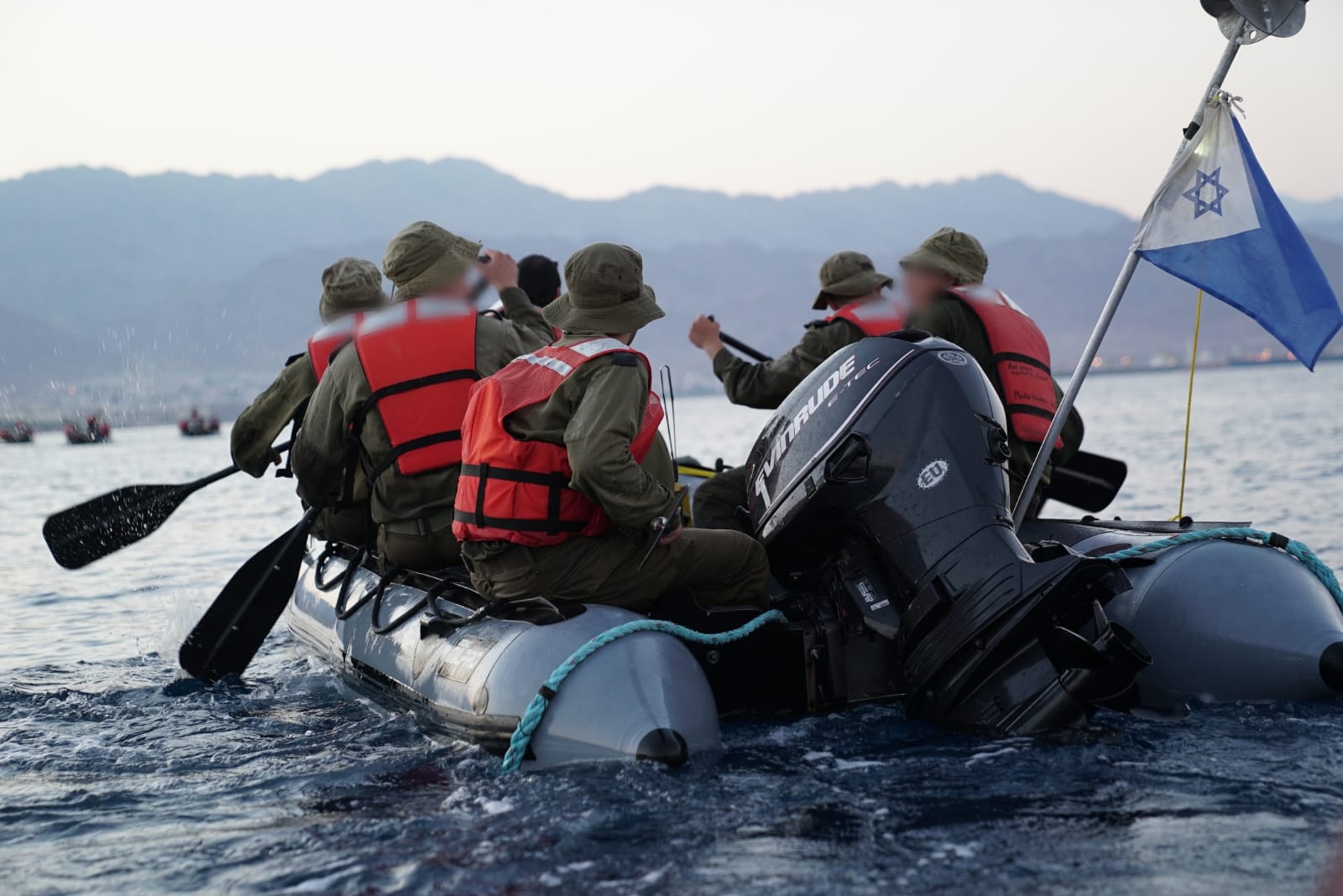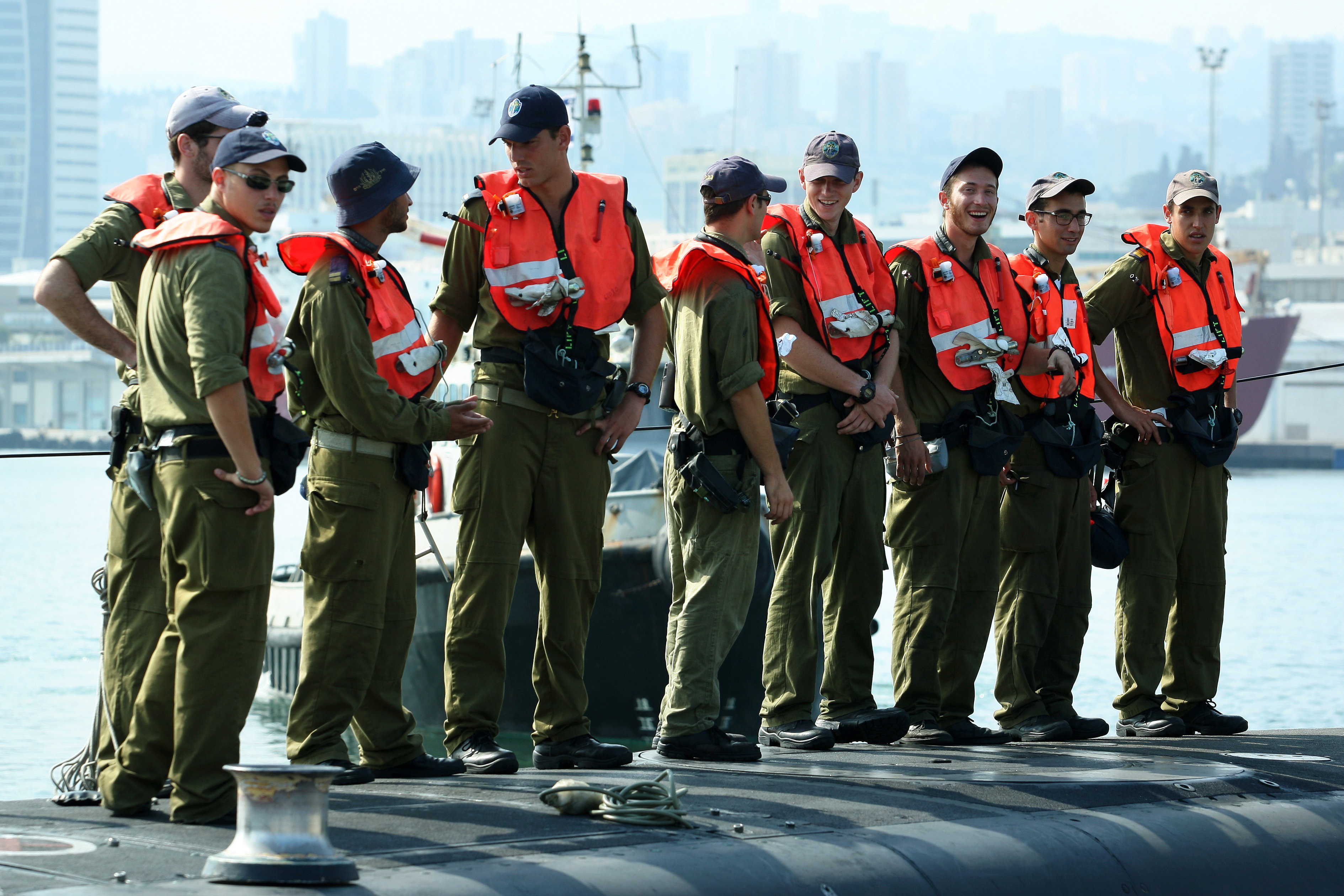The IDF’s submarines, bristling with advanced technology, can covertly gather intelligence on enemy activities, approach distant coastlines and strike targets with precision missiles, while remaining out of the reach of the enemy’s missiles and rockets

An Israeli Navy Dolphin-class submarine off the coast of Haifa on Sept. 7, 2009. Photo by Moshe Shai/Flash90.
The Israel Navy’s submarine training course is—much like the world of submarines itself—submerged in the lesser known world of military operations.
A submarine is the most expensive platform that Israel can buy, and the Israel Defense Forces is about to expand its fleet to six German-made Dolphin platforms—half of them new-generation vehicles that can stay submerged for longer.
These vessels, bristling with advanced technology, can covertly gather intelligence on enemy activities, approach distant coastlines and strike targets with precision missiles, while remaining out of the reach of the enemy’s missiles and rockets. According to international media reports, they are a key aspect of Israel’s nuclear deterrent and second-strike capability.
Yet training the sailors who will serve onboard the secretive vessels is as vital for mission success as any of the submarine’s technological capabilities.
“When we returned to dock after some sort of operation and read all kinds of headlines, we understood that there is great significance in what we did,” 1st Lt. I (full name withheld), a commander of a navy submarine course, told JNS.
He served onboard a Dolphin submarine for a year and eight months after being drafted in 2013. He then chose to attend a naval officer’s course to join the training personnel.
The submarine training course is divided into two stages: A basic stage and a mission specialty stage. 1st Lt. I initially commanded a team within the basic-stage course before going on to command the whole basic stage. He has overseen five training cycles so far, sending “generations” of sailors into the sea’s depths, where they conduct critical missions, the vast majority of which will never be known to the public.

“The basic stage is the physically challenging part,” the officer said. “There are many marches and a series of tests to determine if the cadets are suitable for becoming submarine personnel. We check character traits, the ability to work in teams and the ability to work in a high-pressure environment.”
Only half of the cadets successfully complete the grueling basic stage. Some volunteer to leave after concluding that they are not suitable for this type of service, while others are told by course instructors that they will best realize their skills in other parts of the military.
Six months later, the remaining cadets split up into five specialty areas: technicians, machine operators, electricians, sonar and communications, and weapons operators.
“The second phase is also a challenge,” said 1st Lt. I. At the end of the course, the cadets graduate and split up again into their operations teams onboard the submarines.
“They have to continue training in the submarines on their own after a year-and-a-month of acquiring tools and knowledge. They have to serve with people of different ages and roles, and not necessarily from their own course,” said the commander.
“The two stages of the course prepare them for life in a submarine. The course is filled with uncertainty. They don’t know how long their [simulated] missions will be. They don’t know what will happen in 10 minutes. We take away their phones on base. In a submarine, no one knows what will happen in 30 minutes, and the course reenacts that environment,” explained the officer.
High-pressure situations are also re-enacted, in which cadets must complete tactical or technical tasks. “We get them used to dealing with this kind of pressure with the help of simulators that generate the pressure levels,” he added.
“Those who’ve never been in a submarine can think it is small crowded place, but slowly, one learns to master this environment. I can tell you that one of the reasons I became a commander in the course is the sense—and it is hard to accurately describe it—of satisfaction in seeing the next generation of fighters deploy,” said the commander.
He described how submarine personnel must remain silent about their missions when they return home for breaks, even as they hear their friends openly share their military stories and experiences.
“You can’t talk about what you did, though the operations can influence things in all sorts of places. It is a little hard to transmit this to 18-year-olds, but in the end, this is what they understand,” he said. “They gain great satisfaction in what they do, even if it’s not totally clear to them at that very moment.”

Israeli Navy soldiers board an Israeli Dolphin-class submarine in Haifa on Sept. 7, 2009. Photo by Moshe Shai/Flash90.
The lieutenant noted that Israel is continuing to buy submarines, even though each one is worth “tens, if not hundreds, of tanks and tens of planes. In the end, it is a vessel with very unique capabilities compared to others in the military. The defense leadership has in recent years understood their significance, and they are purchasing more of these, while improving existing submarines. And the ambiguity around this issue is there for a reason. We want to keep our cards close to our chest. Not many units can bring these cards.”
‘Teamwork is a central part of this experience’
Pvt. A, a naval cadet who is currently in the basic stage of the training course, told JNS about the experience of entering such a secretive and singular military world.
“In this course, one does not really know where he will end up, and this is the whole idea. It is not very well-known, and this is deliberate. It’s about entering the unknown and climbing up from there,” he said.
He described a highly demanding training period that presents a battery of physical as well as mental theoretical tests. “There is a very strong combination between the two. One minute we are in a lesson, the next we are in training,” he said. “Teamwork is a central part of this experience. It is emphasized in every aspect. We have to work closely in teams, so that we can sail optimally later on.”
The stress on teamwork even finds expression in the dining hall, where cadets can only begin to eat after everyone has received food. During training missions, even if the task is not fully completed on time, the commander is most interested in “whether we worked as a team. This is the main thing,” said Pvt. A. “He wants to see whether we worked together and not each in his own bubble. This emphasis appears everywhere. Even when we run, the faster ones do not go ahead. We all run together.”
Pvt. A was drawn to the submarine-training course because, he said, he would never get another opportunity to be onboard such a vessel. “This is not a platform one sees anywhere else. Everything we learn here is different, but fascinating,” he stated. “It is a whole world that opens up—one that most of the world doesn’t know about because it’s not supposed to deal with it. Every new layer that opens up leaves us wide-eyed.”










Comments